14 Fascinating Leprechaun Facts For Kids
In Irish tradition, a leprechaun is a fairy that takes the form of a tiny older man, frequently wearing a cocked hat and a leather apron. The word Leprechaun comes from the Old Irish luchorpan, meaning “small body.” An alternate traditional etymology claims that the word “leipreachán” is derived from “leithbrágan,” which is a combination of the words “Leith” (half) and “bróg” (brogue), and connects it to the leprechauns’ trade as shoemakers.
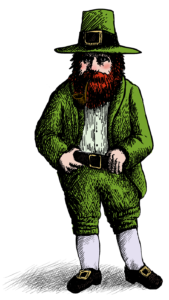
Image Source – https://en.wikipedia.org/
He is rumored to live alone in secluded locations and design shoes and brogues. The sound of his hammering indicates his presence. He has a secret stash of gold; if taken prisoner and threatened with physical harm, he might expose its location if his captor keeps an eye on him. Typically, the captor is duped into looking away, at which point the fairy disappears.
Read on for some fascinating facts about the mystical Leprechaun!
14 facts about Leprechaun for kids
1. Leprechauns are considered to be trickster fairies.
Leprechauns are considered fairies, even if they may not fit your initial conception of a fairy. This fictitious group is said to have been in Ireland before the arrival of humans. They are tiny and prone to mischief. The fairies of Irish tradition were thought to be spiteful, capricious creatures whose magic could make you happy one day and kill you the next.
In Irish tradition, the leprechaun has a variety of functions, but his main one is that of a mischievous trickster who can never be trusted and will lie whenever feasible. In her book “Spirit, Fairies, Leprechauns, and Goblins” folklorist Carol Rose’s account of leprechaun deception talks about a man who managed to convince a leprechaun to show him the bush in the field where his treasure was hidden. The man tagged the tree with one of his red garters because he lacked a spade, then graciously let the fairy go and searched for a spade. When he quickly returned, he discovered that the field’s many trees had red garters.
2. Leprechauns are said to be descended from the Tuatha de Danann in specific folklore.
The magical race known as the Tuath(a) Dé Danann, or “the folk of the goddess Danu,” is depicted in Irish mythology. They are supposed to stand in for the significant pagan gods of pre-Christian Ireland’s Gaelic religion. The Tuatha Dé Danann are a pantheon whose characteristics were manifested in many ways throughout the Celtic realm. The Milesians subjugated the Tuatha de Danann when they arrived in Ireland and compelled them to live underground.
3. Leprechauns are very wealthy.
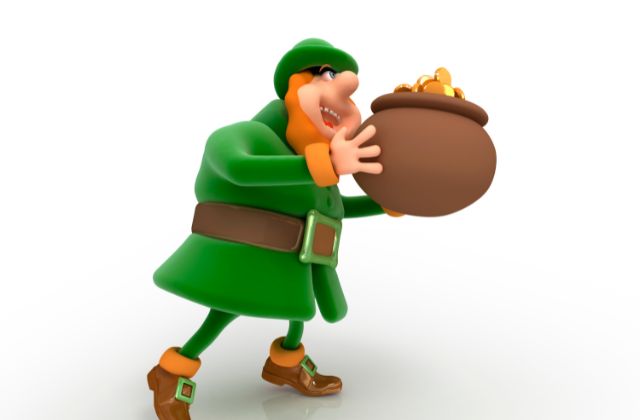
Leprechauns are wealthy and hide their money for protection. People are always looking for their buried wealth. According to certain traditions, these little creatures have a strong affinity for all the treasures that humankind has buried beneath the earth. Legends say every leprechaun has a pot of gold, and according to tradition, you can only find it at the end of a rainbow. Now, that’s the ideal location for these tiny critters since it’s virtually unfindable.
4. Leprechauns only wear green.
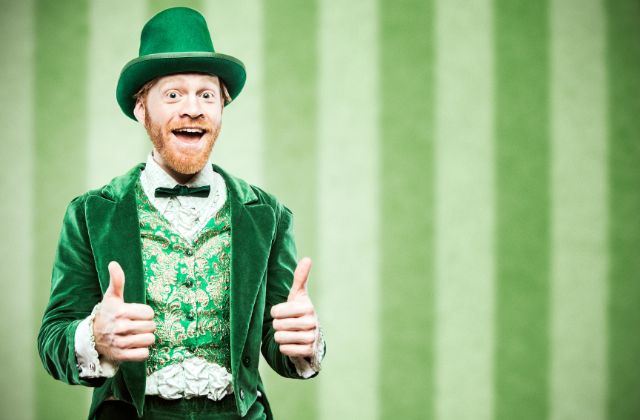
According to Irish tradition, leprechauns were said to wear green; if anyone else did so, they would be invisible to leprechauns. Leprechauns are obstinate creatures who enjoy pinching anybody they come across. Therefore, a person is sure to avoid an unpleasant tweak by donning green attire. Celebrants on St Patrick’s Day often pinch anyone who doesn’t wear green as a reminder that leprechauns could appear at any time.
5. The European Government protects Leprechauns.
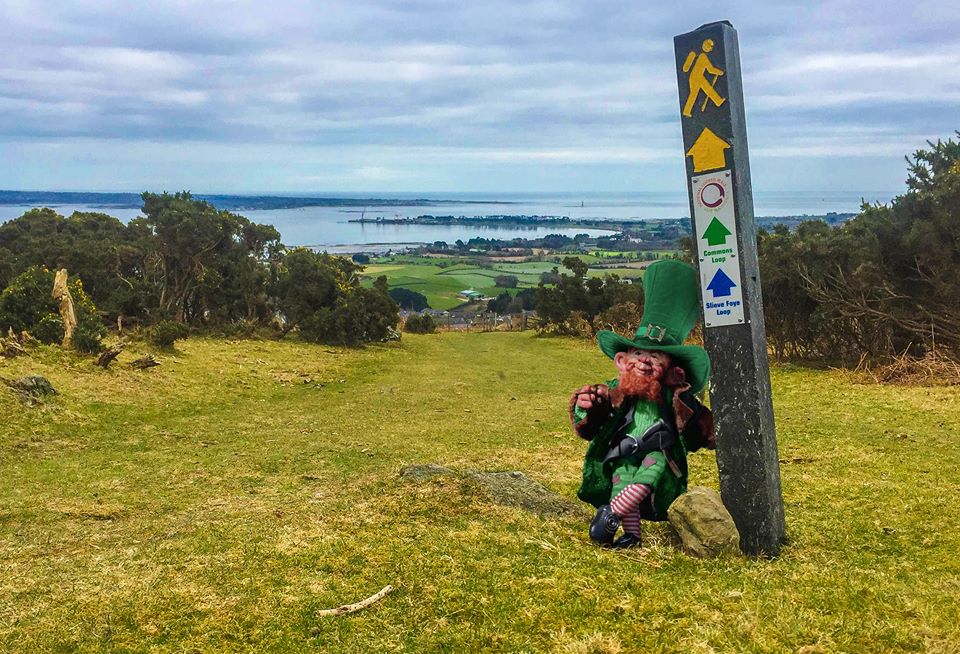
Credit: Facebook / @nationalleprechaunhunt
In the caverns of Slieve Foye, 236 leprechauns are reportedly still alive and residing. The last of the wee people received heritage protection from the EU in 2009, and they now have their protected haven tucked away in the mountain. The directive also covers the local fauna and flora to maintain the land’s biodiversity.
6. There are no female leprechauns.
Some sources claim that leprechauns are the unwanted offspring of the fairy society because of their personality and shape, explaining why there are no records of female leprechauns. There is no information on how leprechauns reproduce. Still, it appears that they do because there are 236 of them living in “The Sliabh Foy Loop” near Carlingford. Leprechauns are consequently characterized as grumpy, distrustful, and isolated beings.
7. A Leprechaun colony resides in Portland, Oregon.
The tiniest park in the world also serves as a home for little leprechauns. A journalist named Dick Fagan saw a small round hole in the concrete where a light post should have been and decided to use it. The “world’s tiniest park” was declared after flowers were added, and Fagan started to write newspaper columns on the location. He described the exploits of a tiny colony of leprechauns with a leader only the journalist could see. On St. Patrick’s Day in 1976, the little garden—then known as Mill Ends Park—became a recognized city park. Over time, donors have made minor modifications, like a swimming pool with a diving board.
8. The clurichaun is a complex cousin of leprechauns.
The boisterous clurichaun, a legendary creature resembling the leprechaun, is dressed in green or sometimes even red. These individuals are constantly painted as belligerent and intoxicated. Stories frequently depict them riding animals at night or emptying entire wine vaults. According to some accounts, these troublemakers are simply leprechauns in the nighttime; after a long day of labor, the bearded fairies become so intoxicated that they transform into a completely different species. They are described as drunkards.
9. In the fairy kingdom, leprechauns serve as financiers and shoemakers.
Leprechauns are notorious for having a lot of money, and the cobbling industry seems to be the primary source of their income. Even though leprechauns are frequently linked to wealth and gold, in mythology, their direct line of work is that of modest cobblers or shoemakers. The little green men put all their energy into making shoes because they spend most of their time alone. They are rumored to carry a shoe and hammer constantly. It is said that you can hear them approaching because of the distinctive tapping sound they make.
Some claim that the leprechauns guard the treasure of the entire fairy world, while other tales attribute the leprechauns’ wealth to the excellent shoes they produce. According to one legend, leprechauns play the role of bankers to prevent the fairies from spending all of their gems at once.
10. Be kind to a leprechaun, and you might get his gold.
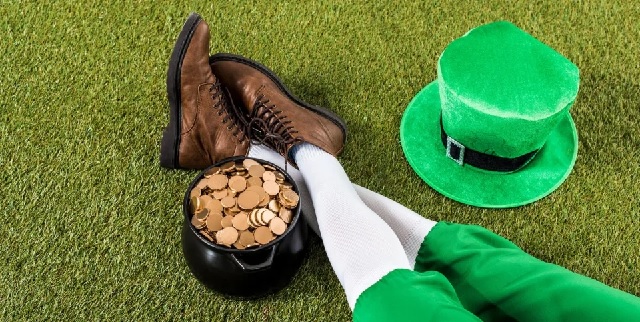
Being pursued for their gold constantly might hurt the fairy’s disposition. Leprechauns are hence suspicious and cloistered. Despite their attitude, they are nevertheless capable of letting their guard down if shown a little tenderness. Folklore mentions a down-on-his-luck nobleman who allowed a leprechaun to ride his horse in exchange; the man returned to his dilapidated castle and saw that it was piled high with money and gold.
11. There are rumors that a leprechaun’s actual remains have been discovered.
On a mountain called Slieve Foye, an Irish businessman from Carlingford claimed to have discovered proof of a genuine leprechaun in 1989. He claimed that after hearing a scream close to the wishing well, he found charred ground, bones, a little suit, and gold coins. Visitors may examine the proof because it is on exhibit behind a glass case. Because of the claims by the man, 100 porcelain leprechauns are subsequently concealed on the mountain during an annual leprechaun search, starting a new tradition. Every year, tourists visit to look for tiny green statues. A 6€ “hunter’s license” must be purchased in advance by hunters. Fortune-seekers gave up their mountain search in 2019 and combed the town for hidden leprechaun pots, one of which contained an actual bar of gold valued at €1200.
12. Some Leprechauns may grant you three wishes.
A leprechaun is challenging to catch, but with a bit of help from his sleight of hand, he can escape with little difficulty. Leprechauns will bargain to be released if you catch one with enough good fortune, “luck of the Irish,” or any other magical ability. The most typical myth states that a leprechaun will grant you three wishes if you manage to catch him. In actuality, they demand their independence in exchange for these wishes. Be cautious with your wishes, though.
According to legend, a man once aspired to rule a tropical island. And his wish was soon granted by the sneaky leprechaun. He was left alone on a deserted tropical island with no one to rule.
13. Leprechauns, according to some tales, can survive underwater.
When you can swim with leprechauns, why swim with the fish? The Middle Ages are when the earliest known leprechaun folktale first appeared. The Ulster King, Fergus mac Léti, dozes off on the sand in it when he wakes up; three “small bodies,” or lchorpáin, attempt to drag him into their underwater lair. After receiving a promise of three wishes, the king captures them and frees them. The mythological men are implied to be seamen in this tale, but contemporary interpretations of the tale rarely include this aspect of living.
14. Is it possible to find a leprechaun?
That is a difficult question. There are, however, some locations that are specifically for leprechauns. The Leprechaun Cavern in Carlingford, Ireland, allows visitors to roam the underground caverns. A tour guide can be found detailing the background of these diminutive beings and describing how leprechauns move through these tunnels. Ireland’s National Leprechaun Museum also contains material about leprechaun sightings going back to the eighth century.
Conclusion
Leprechauns have long been a part of Irish mythology and history, and their tale has been passed down through the generations. Even the entertainment sector has grown to be enthralled by animals! We can’t blame you for wanting to learn more about these mythical creatures, despite their reputation for being very troublesome; they are, in fact, really fascinating. They are one of the most widely recognized symbols of luck, and we hope you find a bit of luck in your day after reading this article.
